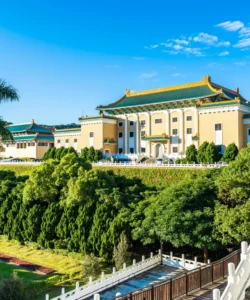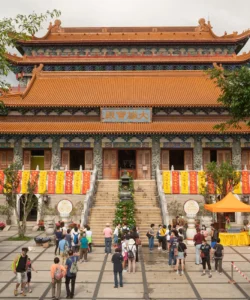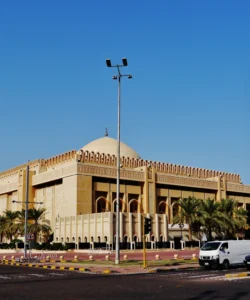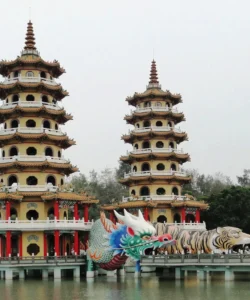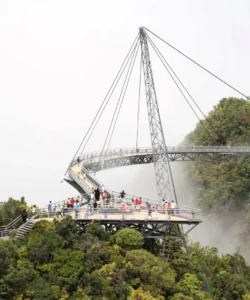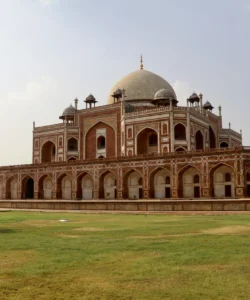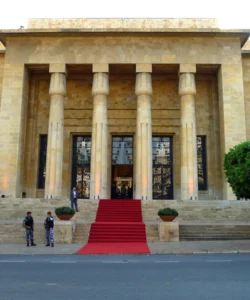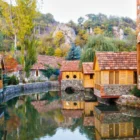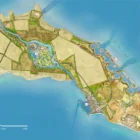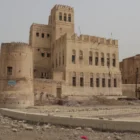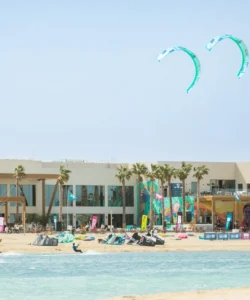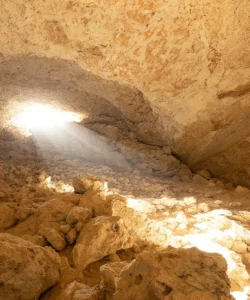Noravank (Armenian: Նորավանք, literally “new monastery”) is a breathtaking 13th-century Armenian monastery complex. It’s renowned for its intricate architectural details, its unique two-storey church, and its stunning setting amidst the brick-red cliffs of the Amaghu River gorge.
Listen to an introduction about Noravank Monastery
Name and Address
- Name: Noravank Monastery (sometimes called Noravank at Amaghu to distinguish it from other “Noravanks”).
- Address: Amaghu Valley, Vayots Dzor Province, Armenia.
- Location: Situated approximately 122 km (76 miles) southeast of Yerevan, near the town of Yeghegnadzor. The monastery is nestled at the end of a narrow gorge, with towering, sheer, brick-red cliffs directly across from it, creating a truly spectacular backdrop.
How to Get There
Noravank is a popular day trip, often combined with other sights in the Vayots Dzor region:
- From Yerevan:
- By Car/Taxi: The most convenient way, taking about 1.5 to 2 hours. Taxis are readily available, or you can rent a car for more flexibility.
- By Minibus (Marshrutka): Take a minibus from Yerevan’s Kilikia Central Bus Station towards Yeghegnadzor, Vayk, or Goris. You’ll need to get off on the main highway near the turn-off for Noravank (around 8 km from the monastery). From there, you might need to walk, try to hitchhike, or arrange a local taxi to reach the complex within the canyon.
- Organized Tours: Many tour operators offer combined day trips from Yerevan that include Noravank, often paired with the Areni wine region and Khor Virap Monastery. This is a hassle-free option that provides transport directly to the site.
Landscape and Architecture
Noravank is an exceptional example of medieval Armenian monastic architecture, celebrated for its harmony with its dramatic natural surroundings.
- Dramatic Setting: The monastery is “hidden” and perched on a rocky outcrop within the picturesque Amaghu Gorge. The surrounding towering, brick-red cliffs (which give the monastery its nickname “Red Monastery”) provide a stunning visual contrast and a sense of seclusion.
- Main Structures: The complex includes:
- Surb Astvatsatsin Church (Holy Mother of God): Also known as Burtelashen (“Burtel’s construction”), completed in 1339. This is the most famous and architecturally unique building, known for its two-storey design with a narrow, cantilevered stone staircase on the exterior leading to the second floor. The ground floor serves as a mausoleum.
- Surb Karapet Church: The main church of the complex, built between 1216-1221. It features intricate carvings and a relatively simple, yet elegant design.
- Surb Grigor Chapel: A vaulted hall chapel often found alongside the main church.
- Ruins and Khachkars: The complex also contains ruins of civil buildings, a mausoleum, and numerous finely carved khachkars (Armenian cross-stones) by master sculptors like Momik.
- Craftsmanship: The monastery is renowned for its delicate stone carving, sculptures, and bas-reliefs, particularly those by the talented architect and miniaturist Momik, who designed Surb Astvatsatsin and is buried at the site. One notable bas-relief is a rare depiction of God the Father on the facade of Surb Astvatsatsin.
- Materials: Built primarily from finely cut lava stone, blending seamlessly with the red hues of the canyon.
What Makes It Famous
Noravank’s fame comes from its distinctive architecture, artistic value, and stunning natural integration:
- Architectural Masterpiece: The two-storey Surb Astvatsatsin Church with its external staircase is a unique and iconic feature in Armenian architecture, a testament to the innovative design of Momik.
- Harmony with Nature: Its location within the dramatic, red-rock Amaghu Gorge creates an unforgettable visual spectacle, especially at sunset when the stone structures seem to glow with the same fiery colors as the cliffs.
- Artistic Legacy: The intricate stone carvings and bas-reliefs, especially those attributed to Momik, are considered some of the finest examples of medieval Armenian decorative art.
- Historical Significance: During the 13th-14th centuries, under the patronage of the Orbelian princely family, Noravank flourished as a significant spiritual, educational, and cultural center, closely connected with the famed Gladzor University.
- UNESCO World Heritage Site (Tentative List): It is recognized for its outstanding universal value in medieval Armenian architecture and is on Armenia’s tentative list for UNESCO World Heritage status.
Differences from Some Other Landmarks
Noravank sets itself apart from other Armenian landmarks in several key ways:
- Two-Storey Church with External Staircase: This architectural feature, particularly in Surb Astvatsatsin, is highly distinctive and less common among other Armenian monasteries. Unlike the rock-cut nature of Geghard, Noravank’s structures are built into the natural contours of the landscape, but not literally carved out of it in the same way.
- Red Canyon Setting: While many Armenian monasteries are in picturesque settings (like Tatev’s gorge or Khor Virap’s plain), Noravank’s specific location within a narrow canyon of vivid brick-red cliffs gives it a uniquely colorful and dramatic aesthetic.
- Emphasis on Artistic Detail: While all Armenian monasteries feature intricate details, Noravank is particularly celebrated for the exceptional quality and artistic expression of its stone carvings and bas-reliefs, especially those by Momik, which showcase a unique blend of traditional Armenian and even some Seljuk influences.
- Integration with Wine Region: Noravank is situated very close to the Areni wine region, allowing visitors to combine a spiritual and historical experience with wine tasting, a unique pairing not typically associated with other monastic sites.
Noravank Monastery Photos:































